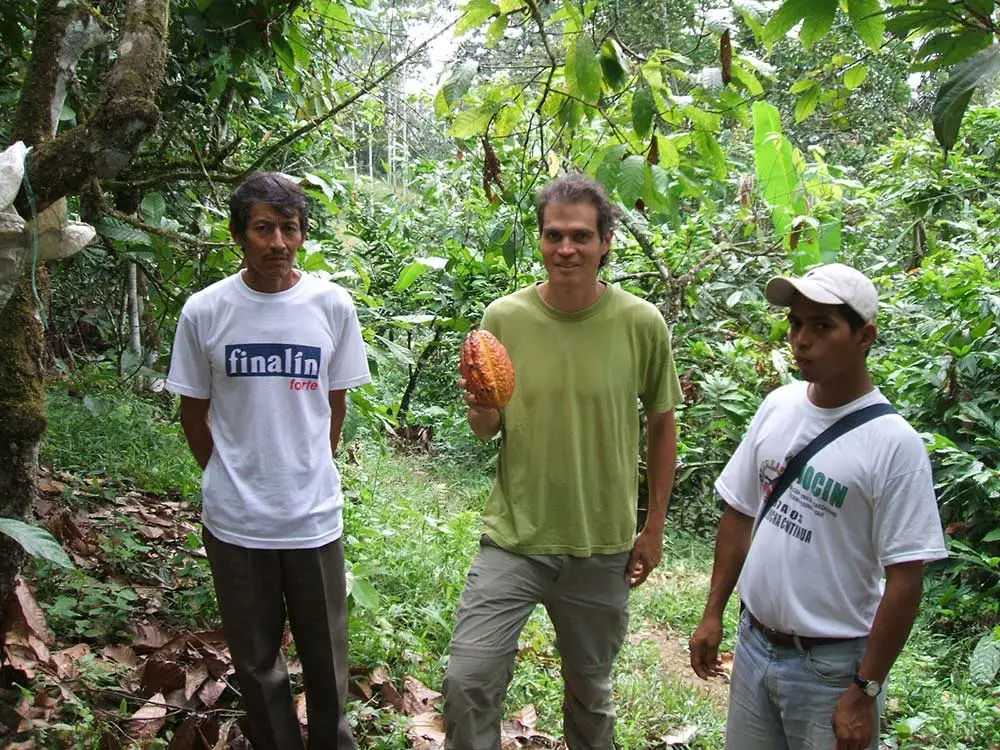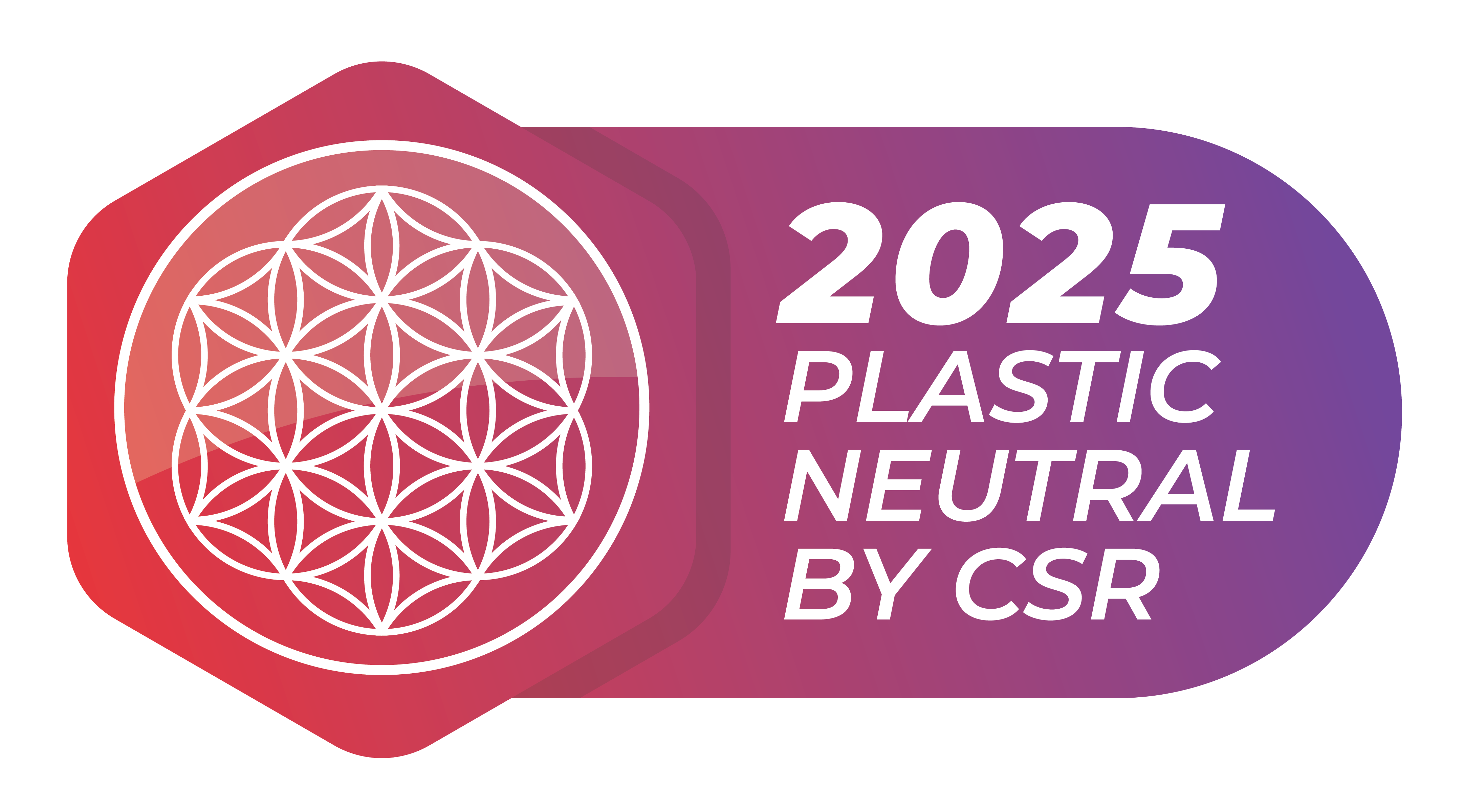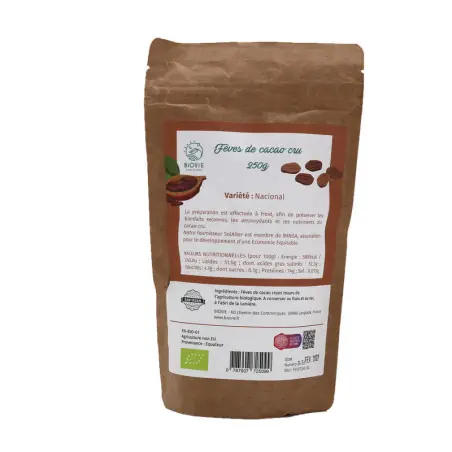Our cocoa beans can be used like almonds. As a snack, to satisfy small cravings or to end a meal on a cocoa note. By crushing them, you can use them like cocoa nibs to add crunch and character to all your savory and sweet dishes.
The beans can also be macerated in oils or honey, for example.
☀️ The Olmecs (1500-400 BC). J.-C.) consumed ground cocoa beans in a hot drink with other spices, chili, and herbs. Over time, the Mayans (600 BC. J.-C.) and the Aztecs (400 AD J.-C.) intensified the cultivation of the cacao tree, the bean became sacred and was used in religious rituals. The first name of the cacao tree is actually "Theobroma," meaning "food of the Gods" in Greek.Symbol of abundance, the cocoa drink remained a privilege for the upper classes and soldiers during battle: indeed, the invigorating and fortifying virtues of cocoa were recognized and served to give courage for war. The bean also became a currency of exchange at that time.Arriving at the Spanish court in 1528, Europeans added sugar, vanilla, and cinnamon to the cacao drink to reduce its bitterness. In the 17th century, the consumption of cacao gradually spread throughout Europe, and roasting became essential for preserving the beans. Little by little, cacao became the chocolate we all know today.Today, our knowledge and techniques allow us to skip the burning stage to preserve cocoa without any health issues.
☀️ The beans we offer you here come from cacao trees of the National variety originating from the equatorial forest of Esmeraldas. This area has been very scarcely cultivated with Trinitario cocoa trees (hybrid species between the Nacional and Criollo varieties), so pure Nacional cocoa can be found there.
This is a cocoa highly appreciated for its floral and fruity scented aroma, which reveals subtle notes of wood, earth, and ashes. Nacional cacao is rare (it is estimated to make up 2% of global production), it has floral notes of jasmine and orange blossom, which makes it particularly interesting. The Nacional variety also has a very characteristic taste known as the "arriba" flavor.It is important to know that there are mainly 3 varieties of beans:
- Forastero : the most widely cultivated in the world, it has a high yield and is very resistant to diseases. However, it has little aroma and a pronounced bitterness. It is the one used in industrial chocolates.
- Trinitario : A hybrid between the other two varieties, it accounts for about 10-15% of global production. It is characterized by its cocoa butter content and much more developed flavors.
- Criollo : the most noble variety, its yield is low and climate change disrupts its production, making it exceptional. It has a powerful, fine, and aromatic taste. Very low in acidity and almost without bitterness, the Criollo is the most interesting from an aromatic point of view. The Criollo is also interesting for its secondary fruity aromas that linger in the mouth, with notes of nuts, caramel, and even blueberries! (it is the closest to Nacional in terms of quality)
For us, in addition to the quality of the final product, Choosing a little-known variety also means supporting small producers, preserving the ancestral know-how of local populations, and helping this original ancient variety to thrive.☀️ You will find in our Raw Cacao Ebook and on our blog different recipes using cocoa:
Raw cocoa yogurt
Vegan chocolate mousse
Raw Cacao Brownie and Barley Grass
Energizing Truffles with Pollen and Raw Cocoa
Benefits of raw cacao
.png)
Dark chocolate (>70%) is known to be good for health and mood. What about raw cacao !It is a concentrate of energy and benefits for our body.
- Antioxidant power
Raw cacao contains 4 times more antioxidants than regular dark chocolate. This antioxidant power is 20 to 50 times greater than that of vitamin C and E!
Antioxidants help to limit the aging of our cells, reduce cardiovascular risk by improving blood circulation, and may even have an anti-cholesterol effect by preventing the oxidation of lipoproteins.
- Energizing Effect
Thanks to theobromine (a molecule only present in mate, guarana, and raw cocoa): it stimulates our central nervous system, releases adrenaline, and blocks fatigue receptors.
For this reason, raw cocoa is not recommended for young children.
- Euphoric Properties
Cocoa beans contain a molecule (PEA) that the brain naturally produces during a moment of love at first sight, for example. The remedy for temporary blues, and yes, it's a molecule linked to joy !
- Natural anti-stress
TheScientific studies prove it: dark chocolate is good for morale. Raw cocoa, which is much richer in magnesium, is even better. Magnesium helps regulate mood and has anti-stress properties.
In addition, cocoa releases serotonin, a hormone responsible for well-being and happiness, which can make you feel relaxed.
☀️ To learn more about the benefits of raw cacao, also check out our blog articles:The Cacao, superfood of happiness ?
Discover the benefits and virtues of raw cacao
How to consume cocoa powder ?
Cacao and weight loss
Boost your health naturally with raw cacao
Our supplier: SolAlter
SolAlter, a member of MINGA, an association for the development of a Fair Economy, was created to contribute to a change in trading practices. It is not just about paying more to producers in the south, but about building lasting relationships based on trust developed through communication and time.
Its creator and leader, Tomas Landazuri, explains in the following lines the reasons that led to the existence of SolAlter:
" Born in Ecuador and coming from the migration from the Andean countryside to the capital, I have always been confronted with the enormous social differences of a South American capital. These differences are often accepted as stemming from "fate."
Wishing to discover other ways of life, I spent a few years in Brazil, France, and then Belgium. Meetings, discussions, readings, and exchanges have shaped my perspective on "fatalism": the "disadvantaged" are, for the most part, not in their situation by chance. Their situation results from a long history in which certain groups of people have conquered and maintained an abusive economic power. This reality is more pronounced in third-world countries, as is the case in Ecuador, where 40% of the population lives below the poverty line.
I succeeded in studying at a university in France. I obtained an engineering degree in food industries. My professional experience took place in various companies in Ecuador, France, and Belgium. I was a researcher in the laboratory of a Belgian group manufacturing ingredients for the food industry. For five years, I was immersed in this environment. I closely observed the tactics of large industrial companies to increase their profits: the race to lower production costs, at the risk of sacrificing product quality or even the long-term health of the consumer. This was always accompanied by well-calculated marketing tactics to "seduce the consumer." After this experience, I understood that when all of a company's efforts are directed towards profit, humans remain a tool of production. This is a source of political, economic, social, environmental, and even nutritional imbalance.
I therefore headed to the INBP (National Institute of Bakery) in France, where my position as a project manager allowed me to develop projects to defend the interests of artisan bakers. At that time, the creation of SolAlter was inevitable. I left this institution to fully dedicate myself to this project."

The SolAlter cocoa sector comes from the Ecuadorian region of Esmeraldas. SolAlter buys Nacional cocoa beans directly from Uoprocae, an organization created by the producers of this region. The aim of this group of farmers is to enhance cocoa production so that it becomes the main source of income for families again, thus ending migration; and to pool post-harvest processes and cocoa marketing. This organization values the quality of "Nacional" cocoa through a system of bean collection, fermentation control, and bean drying. Farmers can drop off their beans at several Uoprocae centers two days a week, and they are paid immediately based on the weight provided. An association truck transports the beans to the post-harvest processing center. Here they are fermented, dried, and packaged. Controlled fermentation is a key step in developing the aroma of cocoa. Farmers regularly receive technical training from two Uoprocae technicians to optimize cultivation and ensure a post-harvest process that brings out the full floral aroma of this cocoa.
SolAlter also adheres to the SPP system (Small Producers' Symbol), which is a demanding guarantee of Fair Trade for Farmers. 100% of the cocoa purchased by SolAlter is guaranteed by the SPP.
Ingredients : Raw cacao beans from organic farming, unroasted
Packaging: Resealable bag of 250g or 1kg
Sustainable, recycled, and compostable packaging. Plastic-free and certified "Plastic neutral by CSR".

Store in a cool, dry place, away from moisture.
| Average nutritional values | 100 g |
| Energy value Energy | 588 kcal 2423 kJ |
Lipids
of which saturated fatty acids: | 51.6 g
32.3 g |
Carbohydrates
no sugars | 4.7 g (including 0.1 g of sugar) |
| Proteins | 14 g |
| Salt | 0.015 g |





















.png)

